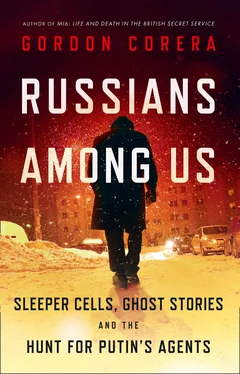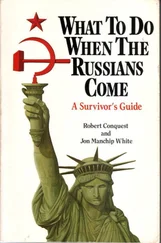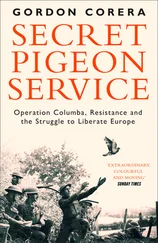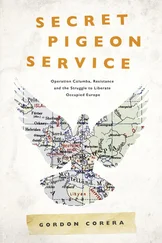The twin tragedies had not gone unnoticed. A KGB officer serving in Canada had observed them. He would steal something from these two families who had already lost something irreplaceable—their children’s identities. KGB officers had the macabre job of strolling around cemeteries looking at graves for likely candidates, a process known as “tombstoning.” The ideal situation was a child who died away from the country in which they were born, with few close relatives, reducing the documentary and witness trail to the death. Once a candidate was found, the next step might be to destroy any documentary evidence of the death. This could be as simple as bribing someone for access to a church registry book and then ripping out the pages. Then came the key—requesting a new birth certificate (a technique that relied on there being no central registry of births and deaths). “It was considered a big success for us when Department 2 managed to obtain children’s birth certificates after a whole family died in a traffic or other kind of accident,” explains one former member of Directorate S. A birth certificate meant a child could be born again as an illegal.
Directorate S was broken up into departments. Department 2 was the storytellers. Their job was to create a fictional life and to make it plausible enough to stand up to scrutiny from a discerning critic by building “legends” and providing backstories. Officers of the department would draw up paragraphs in two columns. On one side would be the supposed detail of a person’s life—Donald Heathfield was Canadian and born in Montreal. On the other side would be the made-up evidence supporting that claim—starting with a birth certificate. If there was a claim that did not have documentation, then there would be a plausible story why. It was painstaking work. If there was any doubt, an entire identity would be discarded. Roughly one in ten attempts would create something considered sustainable against checks by Western security services. Each illegal had a “kurator”—literally a curator of the false identity who would supervise their training and act as a handler once they were in the field.
The Operational Technical section of Department 2 includes a team of highly skilled forgers. What does a French passport issued five years ago look like? What does a Finnish driver’s license look like? They study which inks, papers, glues, and even staples are used in target countries so they can be faked or—if blanks can be stolen—doctored with a new identity inserted. A laboratory works on how to replicate the different types of paper and ink and how to artificially age a document in a special oven so a passport can be filled with the backstory of visas and trips and made to look old when it is in fact new. So why not just create entirely fake personas for the spies? A proper check into someone’s background would raise too many questions and if fake documents are spotted then it is game over. For long-term penetration, the strong preference was always to get hold of real documents rather than rely on fakes. This meant becoming a “dead double”—stealing an identity of someone deceased and then using it to build a set of genuine documents. That was the route for Heathfield and Foley. They might arrive in Canada and start with a birth certificate. This could be used as the stepping-stone to contact public bodies and obtain other identity documents. Ultimately this would eventually lead you to a real passport, helping create what was called an “iron legend.”
So who was the resurrected Donald Heathfield? His real name was Andrey Bezrukov. He was born on August 30, 1960, in Kansk, in remote Siberia, a small town near the route of the Trans-Siberian Railway, home to a MiG fighter base. His parents were often away for work and so he was an independent child, self-contained with a strong inner confidence. Bezrukov traces his family tree back to the Russian conquest of Siberia under Ivan the Terrible in the sixteenth century, when his distant relatives had first come to the region. “For me to forget this is to be left with nothing,” he later said. Remembering your roots was important when you were pretending to be someone else. Patriotism would sustain him in his long years far away from home.
In 1978, at the age of eighteen, Bezrukov went to Tomsk State University. His study of history gave him a sense of the uniqueness of Russia’s story, a country engaged in what he calls an “endless, painful search for herself between East and West.” And it was while a student that he was talent-spotted. Universities are the classic recruiting ground for illegals. Department 3 of Directorate S is in charge of the intense selection process. An ideal candidate is in their early twenties. When a person was younger than that you could not be sure they had what it took to survive. By thirty, they were no longer malleable enough to be shaped into a new person. Spotters looked for those who might have the right set of skills—an aptitude for languages was vital, so was intelligence, patience, adaptability, an ability to cope with stress, and a sense of patriotism. Careful psychological assessments were undertaken. Someone who was volatile or looked like they might drink too much or have too much of an eye for the opposite sex was not suitable. This was all initially done at a distance before a move was made—perhaps, as often in the West, on the recommendation of a professor. Somewhere among the stream of students carrying books to and from class and flirting with each other, the KGB had spotted Bezrukov.
Bezrukov was not recruited alone. The fact that illegals were selected in their twenties posed a problem—relationships. An illegal was destined to spend decades living undercover. It was unrealistic to think they would not engage in relationships. But this posed a danger. If you fell for a local, you would either have to constantly try to hide the truth from them or risk telling them you were not who you said you were. Worse, you might place love over duty and give up your spying career. Anatoli Rudenko, a 1960s illegal, worked in West Germany and London before ending up in the United States as a piano tuner to the rich and powerful—including the governor of New York, Nelson Rockefeller. Rudenko’s career ended when he was forced to reveal he had defied orders by secretly marrying a hairdresser in Germany and taking her with him. Plans to use him to penetrate the United Nations and think tanks—including by seducing lonely young women—had to be shelved. It was an example of why human relationships were the key to an illegal prospering or failing.
And so the preference became to send out couples. Marriages were sometimes arranged and manufactured by Directorate S (its officials could even officiate in order to maintain secrecy). An arranged marriage would not just avoid the danger of falling in love but also offer a partner in undercover work. “You would not have to waste your time chasing after girls and risk falling into bed with the wrong one,” one illegal was told during the Cold War when a partner was offered to him. “You would not have to explain your absences … [Y]our partner would be a trained agent who could help with communications, photography, drops—with everything. You would not be alone behind the lines.” Not all marriages worked. Yelena Borisnovna and Dimitry Olshevsky were sent to Canada under the identity of two dead babies, Laurie and Ian Lambert. Their relationship hit the rocks out in the field. Dimitry moved in with a local woman, while Yelena began to date a British-born doctor. Canadian intelligence arrested them in 1996. The pair were deported, landing on a stormy night in Moscow to be whisked away in a blacked-out van straight from the runway.
Andrey Bezrukov’s marriage, though, was no fake. This was an adventure that two young people set out on together. Elena Vavilova was a fellow history student at the university. She had been born in November 1962 in Tomsk, where her parents were academics. She was a cheerful, outgoing child who enjoyed figure skating, ballet, and acting. At university she played the violin as she studied for her degree. There she met Bezrukov. There was a confidence to him and also a sense he might take her out of the well-ordered world she had grown up in. “Andrey offered me something out of the ordinary, an adventure,” she later said. The young couple spent the night together in the university library, sneaking in before closing time and staying among the book-lined shelves. But they were caught by the director the next morning. There was a telling off but no punishment. Perhaps it was this spirit of adventure and the willingness to take risks together that got them noticed.
Читать дальше












